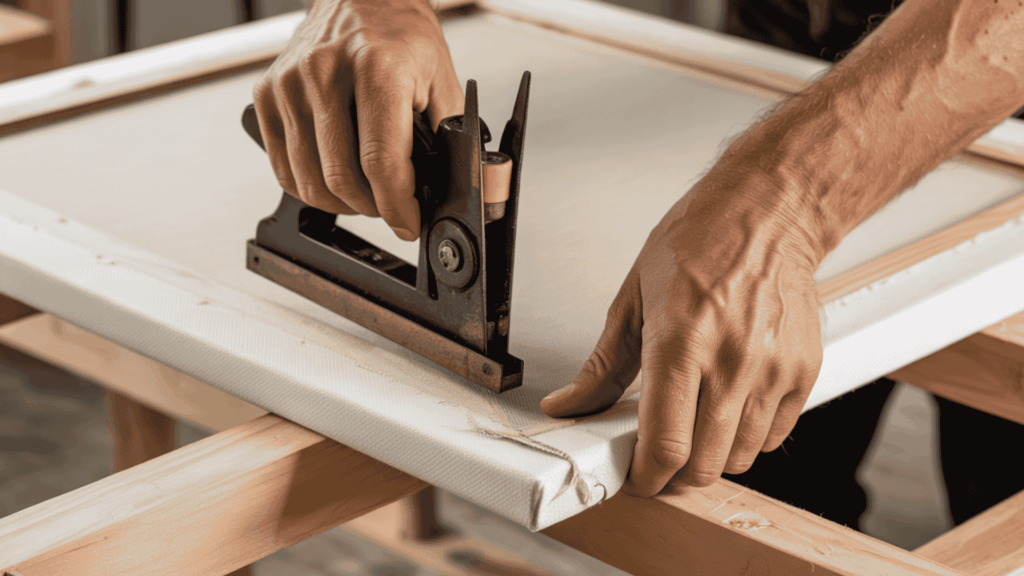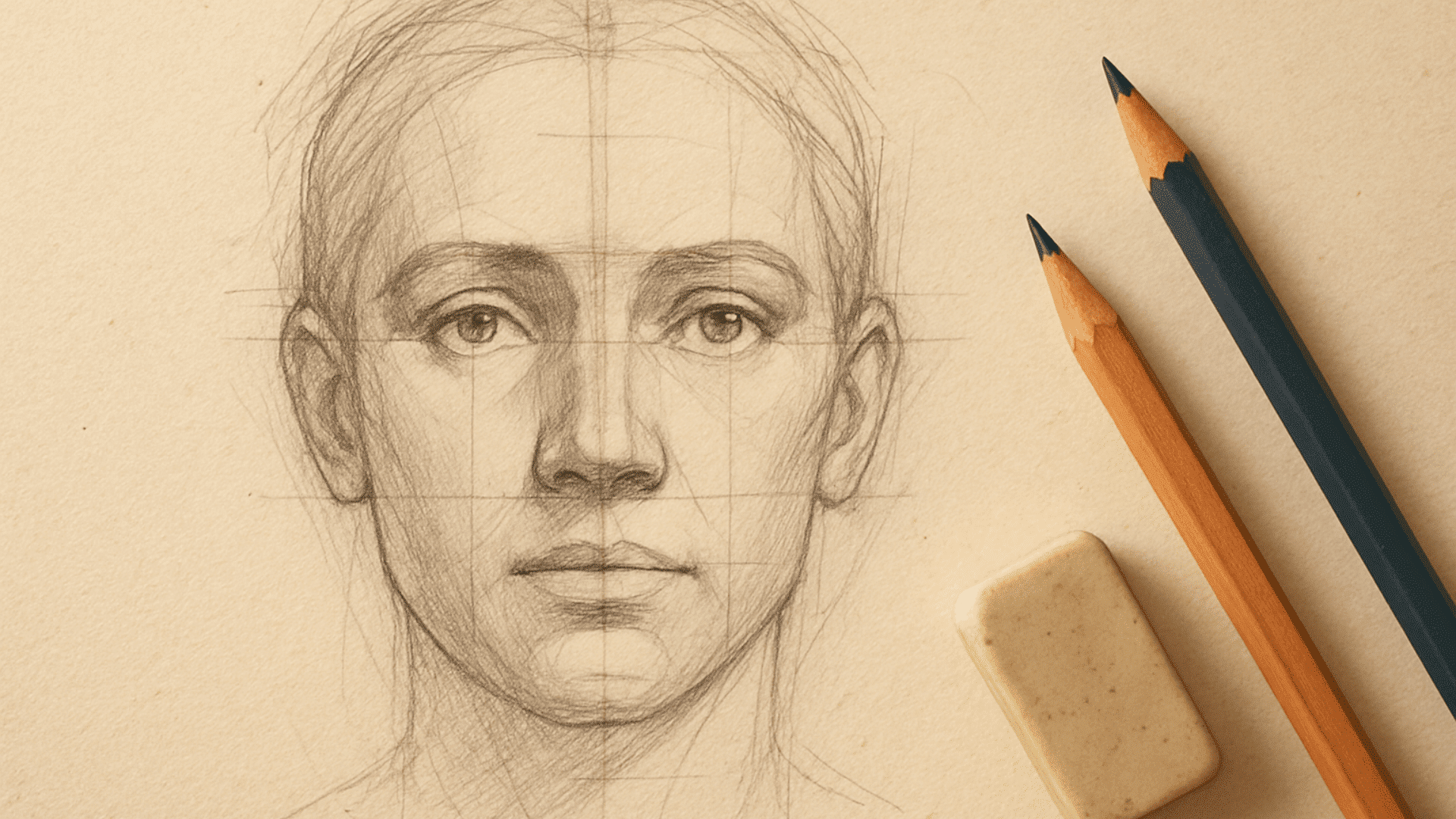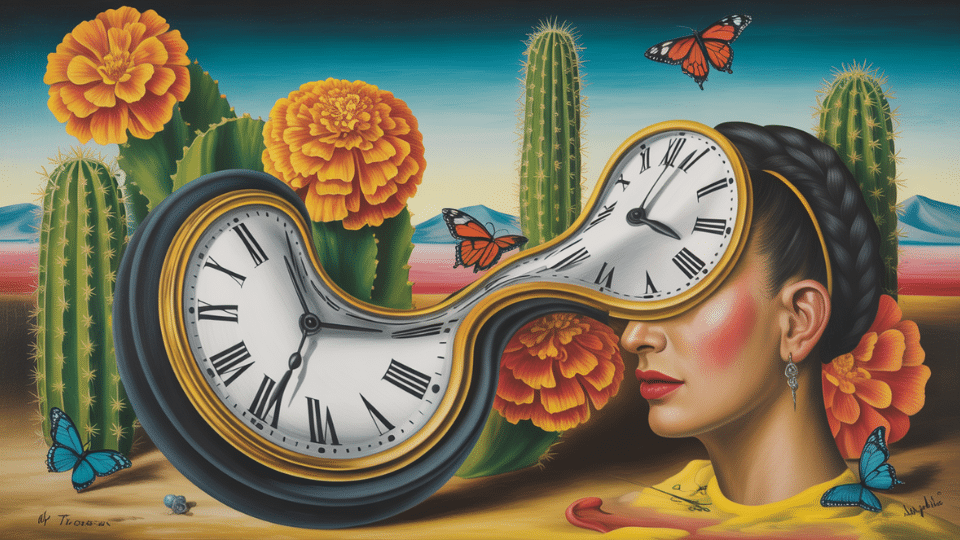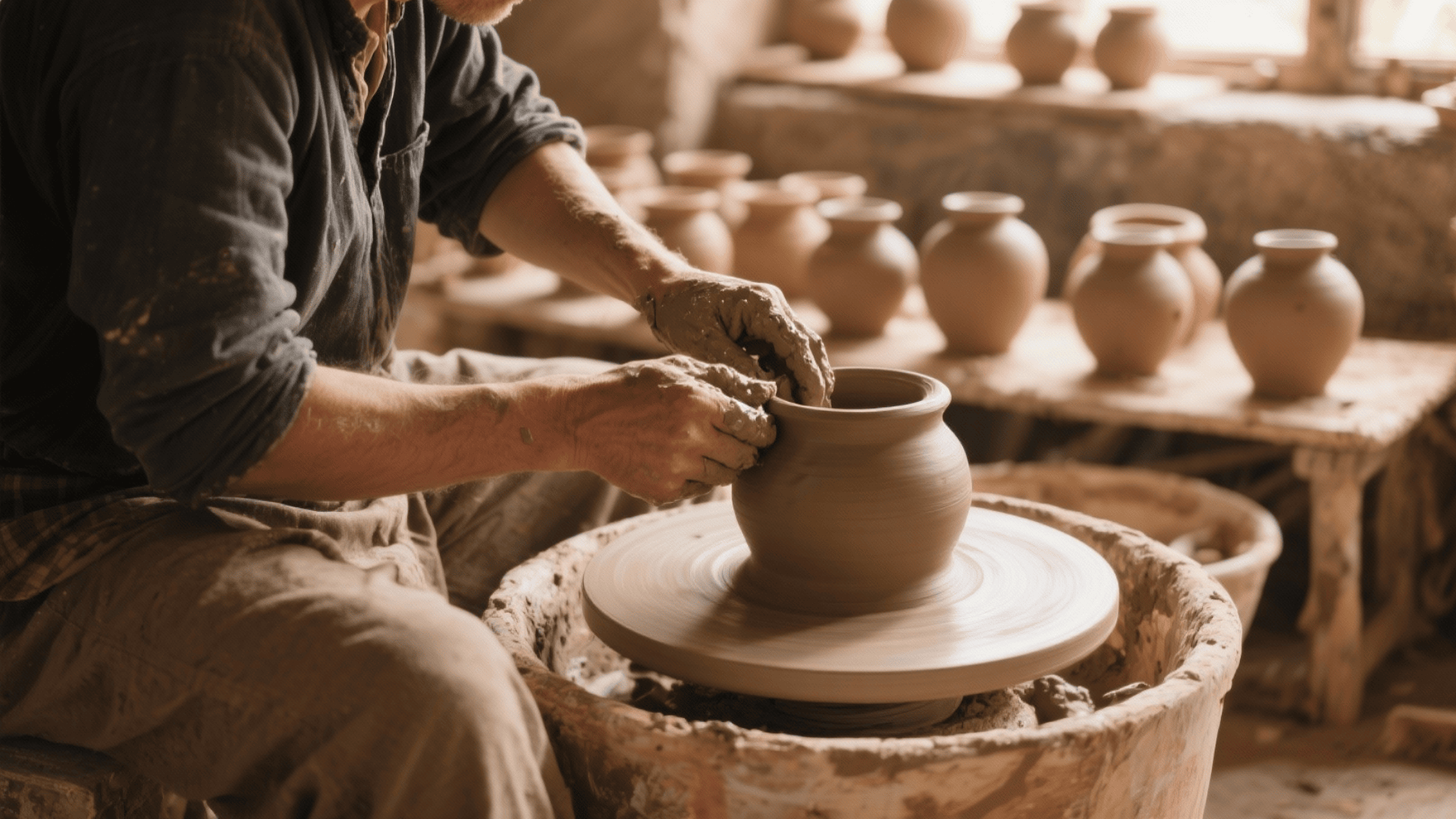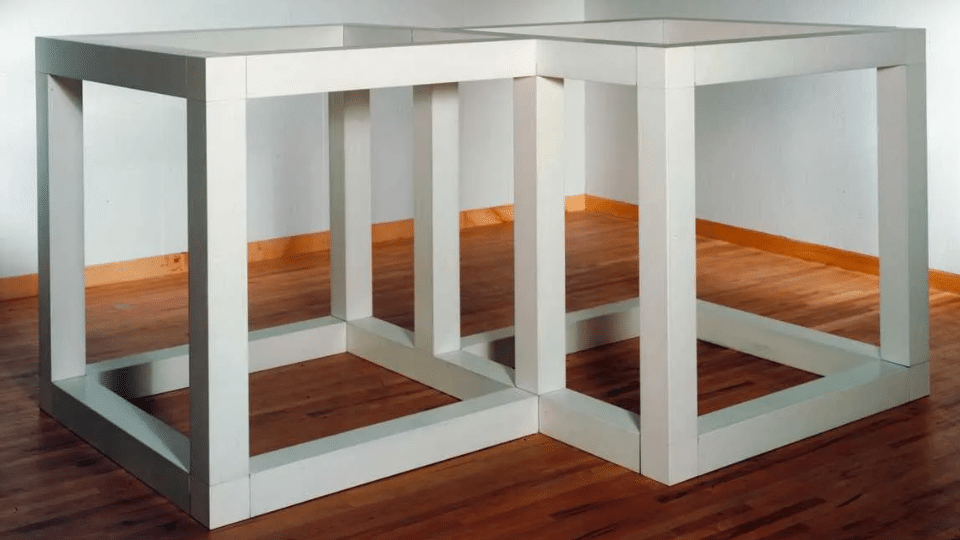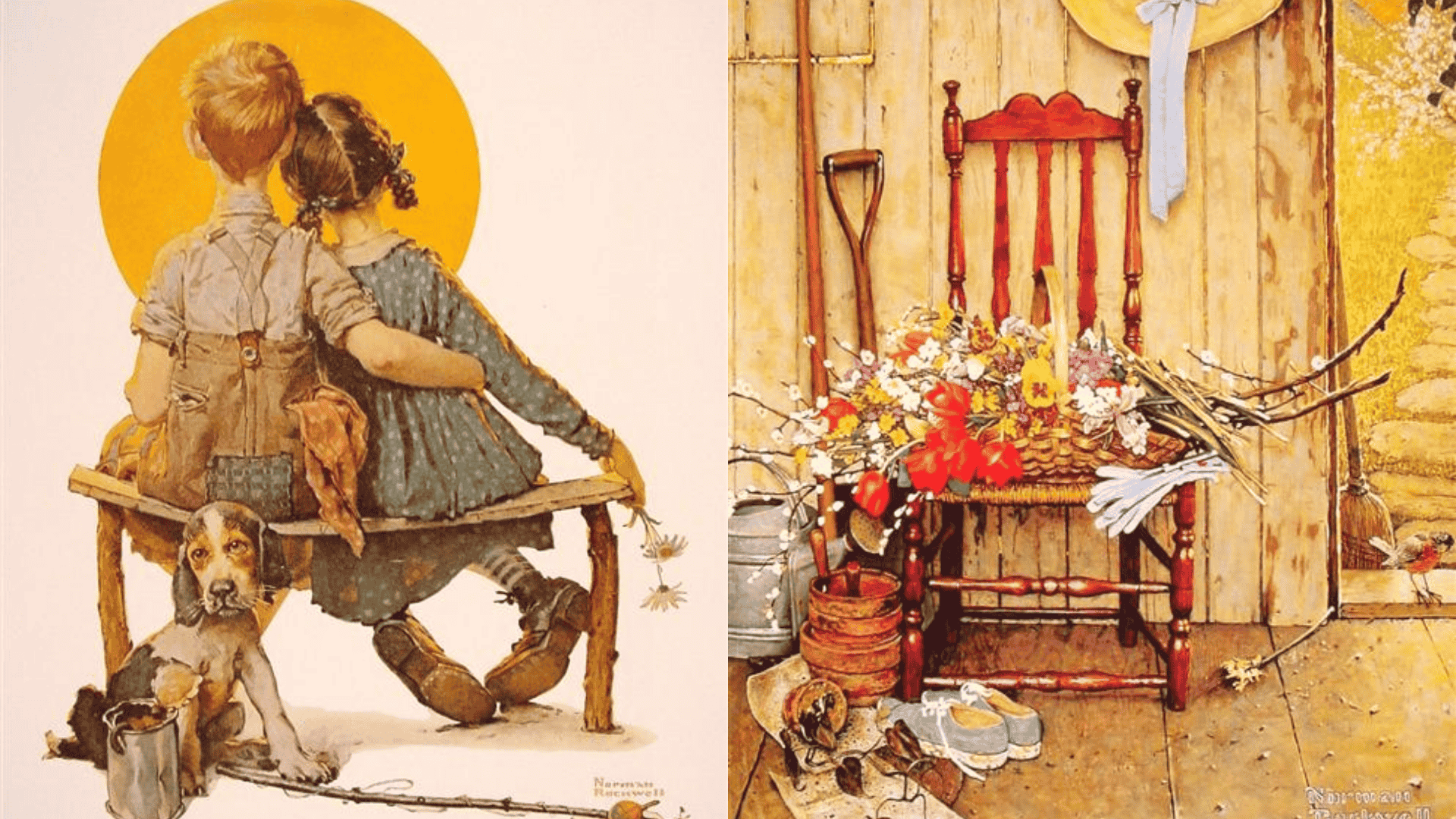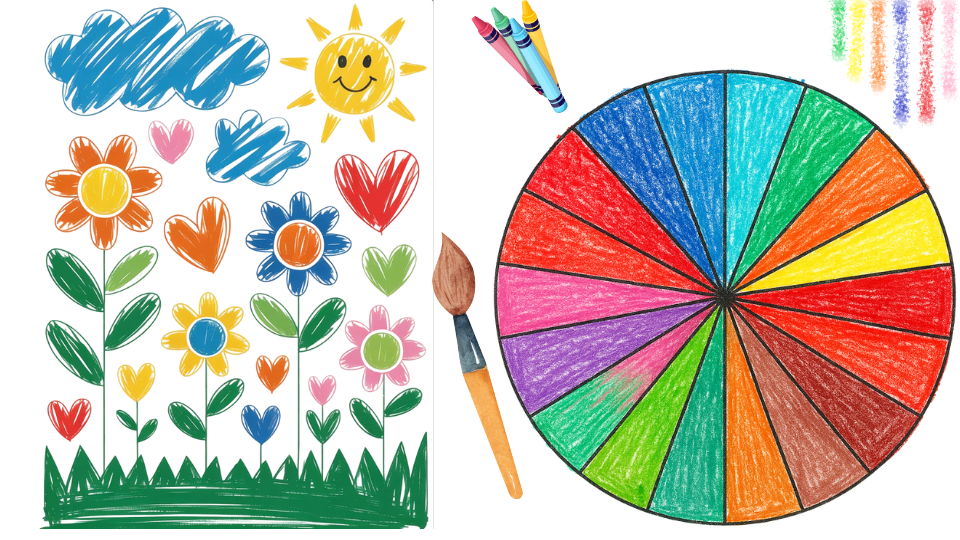If you’ve ever wanted to paint on a canvas but only had a plain roll of fabric, don’t worry, you can easily turn it into a sturdy surface yourself.
Canvas stretching isn’t just for professional artists or fancy studios; it’s a simple process you can do at home with a few basic tools and a little patience.”
You control the size, tension, and quality, making your canvas personal; this guide walks you through the steps with tips to keep it smooth, tight, and ready for painting.
You’ll learn how to prepare, stretch, finish the corners, and prime your canvas step by step, making it ready for your next painting.
Why Stretching Your Own Canvas Is Worth It?
Stretching your own canvas might seem like extra effort, but it brings huge advantages for both beginners and professional artists. It not only saves money but also gives you more freedom to create exactly what you want.
Key Benefits:
- Cost-Effective: Pre-stretched canvases are expensive; DIY stretching lets you cut costs, especially if you paint often.
- Custom Sizes: You’re not limited to store-bought dimensions; make canvases that perfectly suit your vision.
- Better Control: Adjust the tension to match your painting style, tight for fine detail or looser for textured work.
- Professional Finish: Handmade canvases show craftsmanship and care, making your artwork stand out.
- Learning Value: The process teaches you more about materials and canvas structure, deepening your artistic skills.
Learn the Ultimate Method for Stretching a Canvas
The method of canvas stretching involves carefully placing and tensioning the canvas. Working systematically when you stretch the canvas helps avoid uneven surfaces or wrinkles
From stapling the center to finishing the corners, balance is key. This approach guarantees a taut, durable, and professional finish.
Grab These Tools Before You Start
Before you begin, ensure you have the necessary tools on hand. Having everything ready will make the process smoother and help you achieve a clean, professional finish.
| Tool | Purpose |
|---|---|
| Canvas stretcher | Helps pull the canvas tight to avoid sagging and ripples. |
| Hammer | Ensures staples are flush and secure against the frame. |
| Staple gun | Used to fasten the canvas tightly to the wooden frame. |
| Scissors | For trimming excess canvas neatly from the back of the frame. |
| Wooden frame | The foundation that supports and holds the canvas in place. |
Tip: Using high-quality tools not only makes the process easier but also enhances the longevity and professional appearance of your canvas.
Step 1: Position the Frame and Secure the First Staples
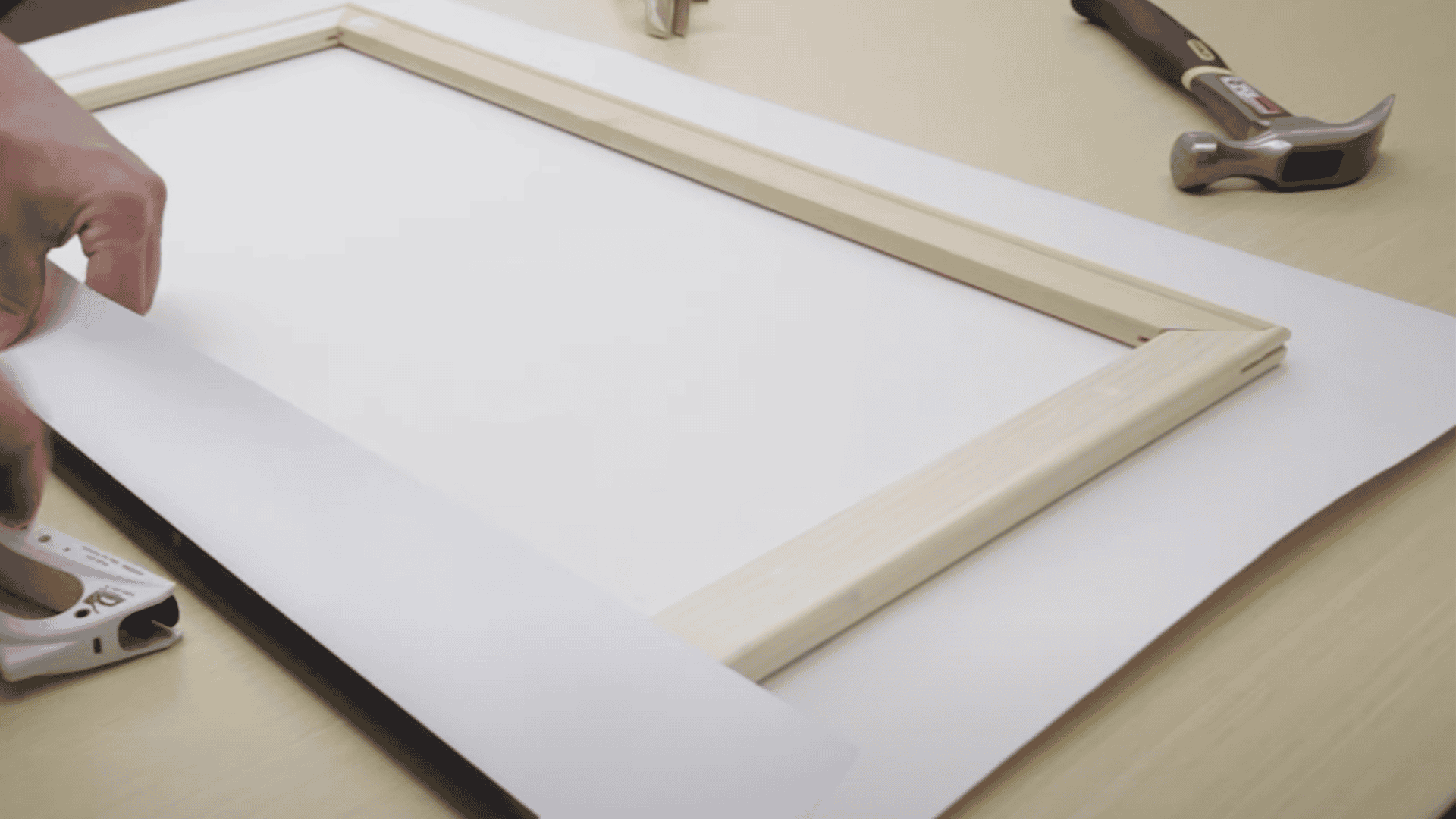
Begin by placing the wooden frame in the center of your canvas. The key is to start with the longest side, secure it firmly, and then balance the tension by working on the opposite side.
This sets a strong foundation for an evenly stretched canvas.
Action Plan:
- Place the wooden frame centered on the canvas.
- Fold the longest side of the canvas over the frame.
- Staple once in the middle to hold it in place.
- Stretch the opposite side with the stretcher and staple the center.
Step 2: Secure the Remaining Sides
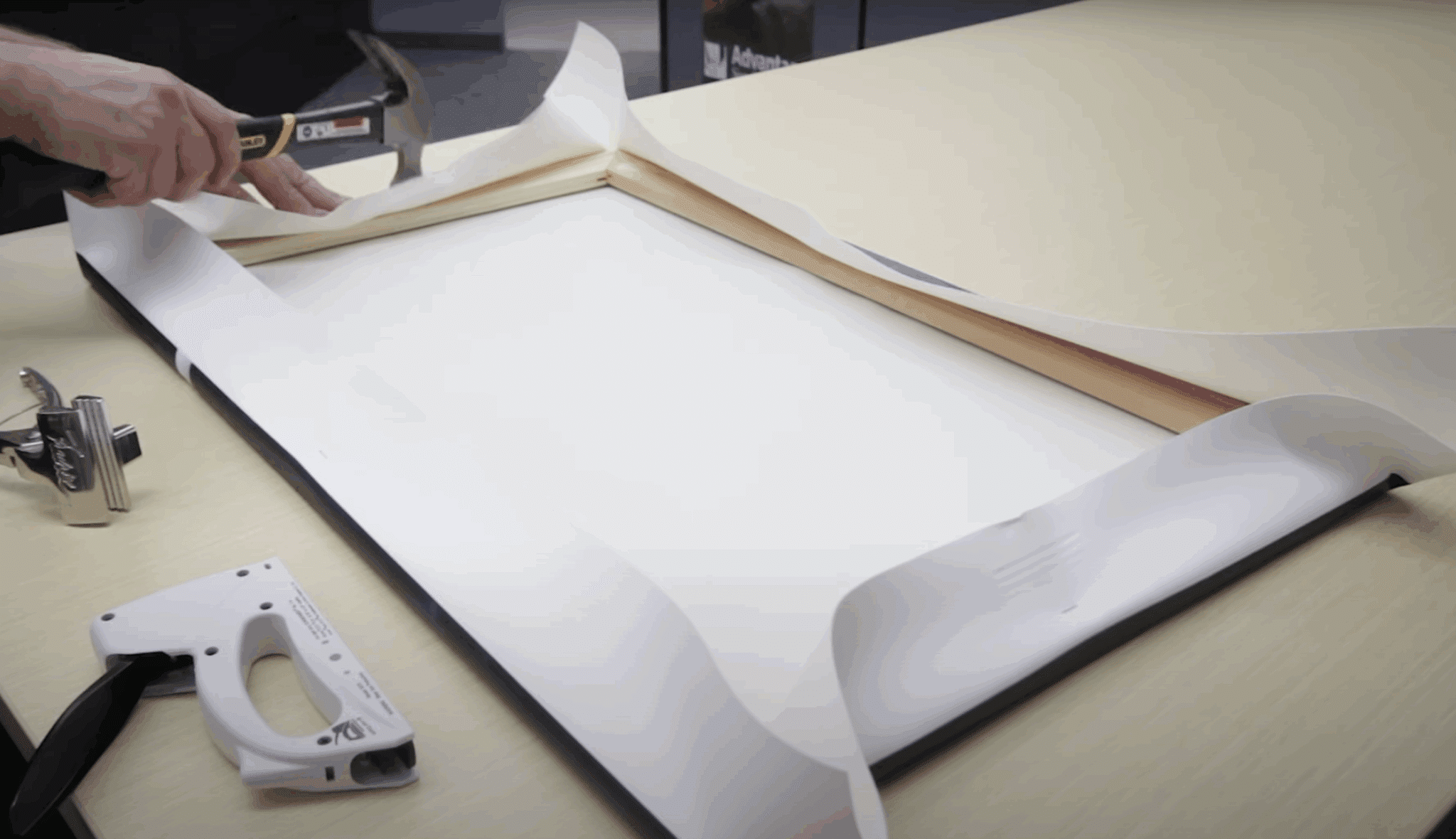
Once the first two sides are fixed, it’s time to secure the others. Work on one unstapled side at a time, stretching the canvas firmly before stapling.
Then repeat the process on the opposite side. Finally, use a hammer to ensure all staples sit flush with the frame, providing a neat and secure hold.
Action Plan:
- Stretch the canvas on one of the unstapled sides.
- Place a staple in the center to lock it in place.
- Move to the opposite side and repeat the process.
- Tap all staples with a hammer so they sit flat and secure.
Step 3: Work from the Center Outward
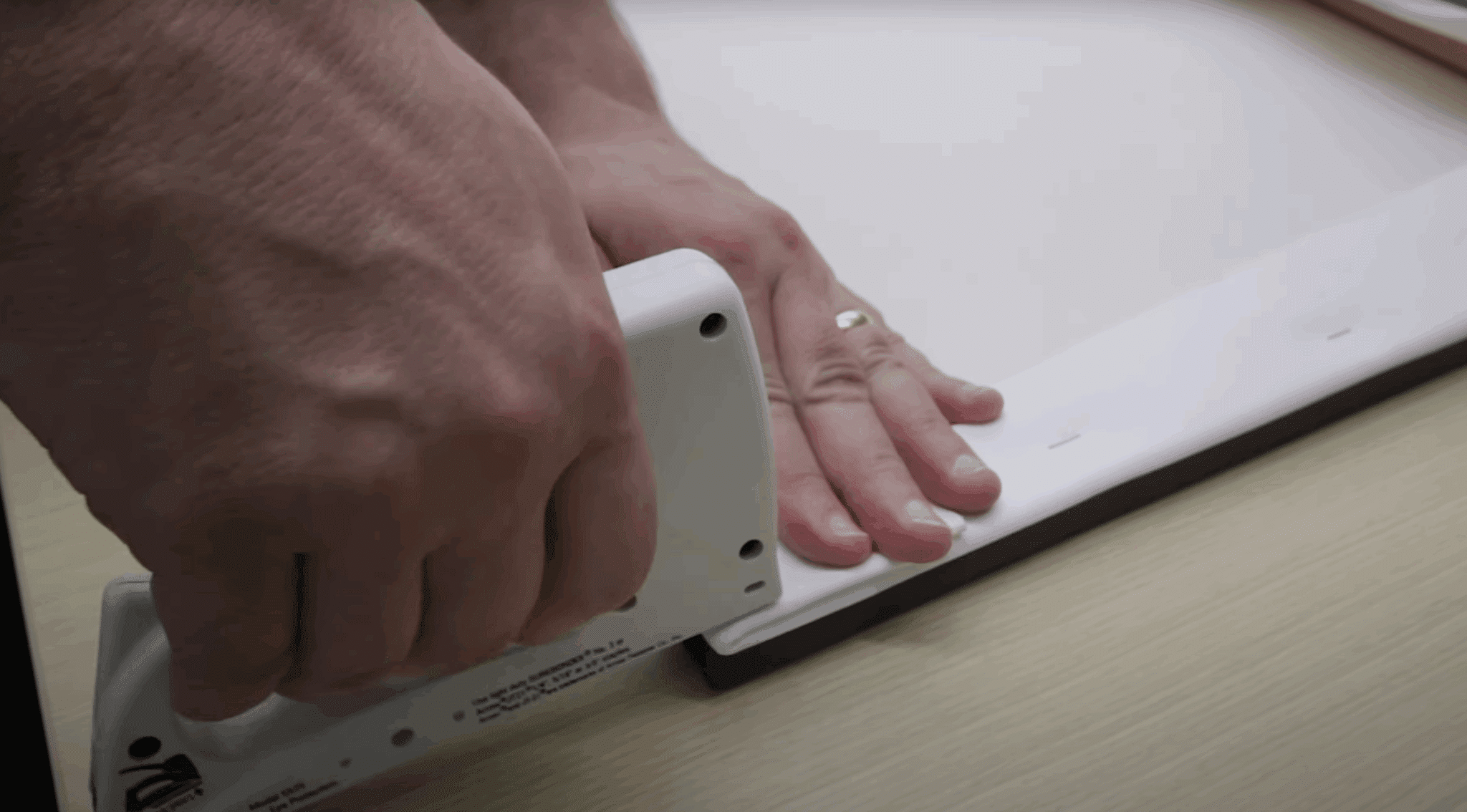
To keep your canvas tight and smooth, continue stapling from the middle toward the corners. Stretch the fabric gently as you work, maintaining even pressure.
This method prevents ripples and ensures the canvas remains balanced on all sides.
Action Plan:
- Return to your starting side and staple outward toward the corners.
- Stretch the canvas gently before adding each staple.
- Repeat the same process on the opposite side.
- Keep working evenly until all sides are secure and smooth.
Step 4: Finish the Corners and Trim Excess
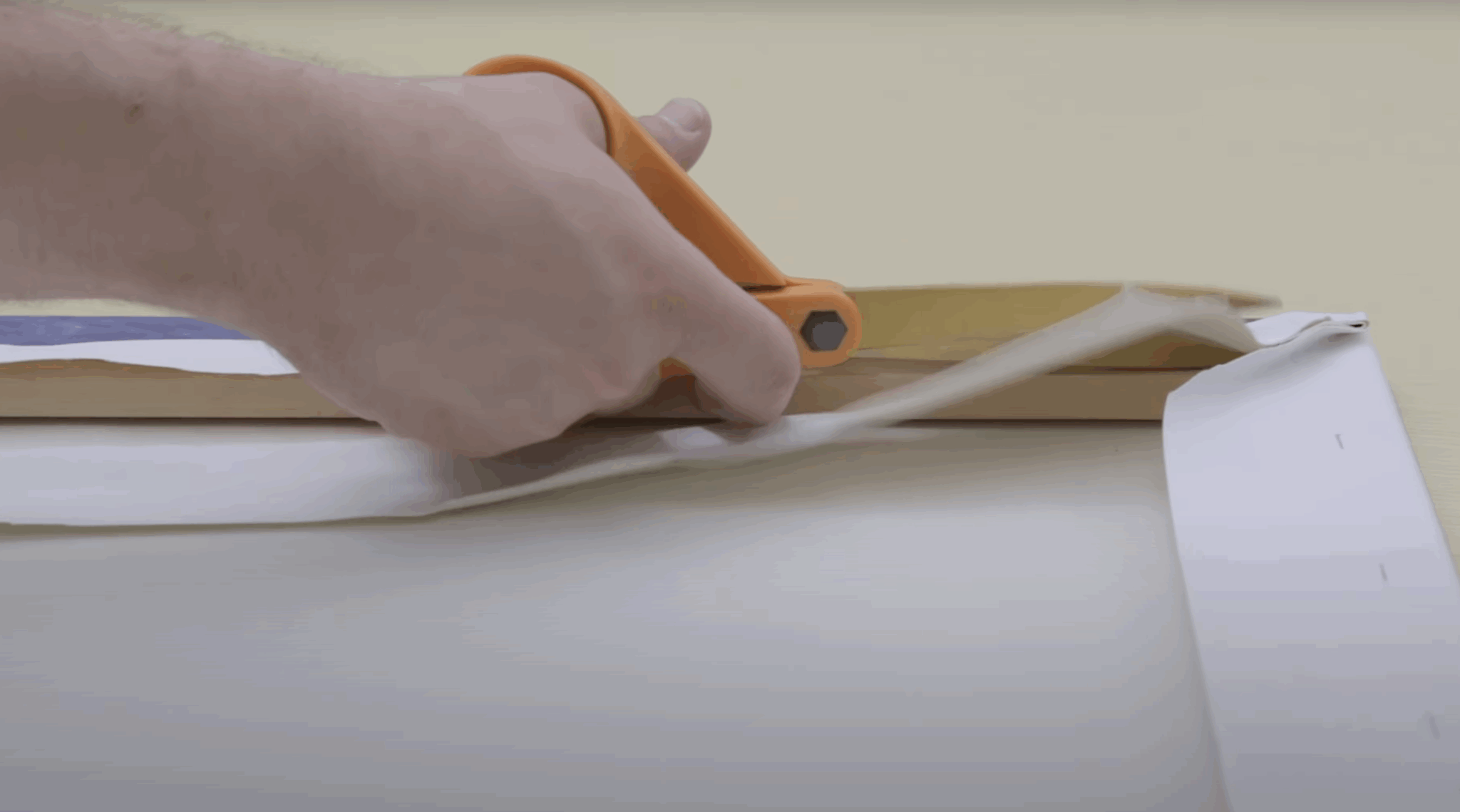
The final step is all about neatness and tension. Leave the corners until last, fold them cleanly in a style that suits you, and secure them with staples.
Once finished, trim off any extra canvas and test the surface; it should feel tight and sound like a drum when tapped.
Action Plan:
- Fold each corner neatly and staple it securely in place.
- Select a corner fold style that produces a clean appearance.
- Trim away extra canvas from the back of the frame.
- Flip the canvas and tap lightly; it should be tight and drum-like.
For more detailed instructions, refer to the YouTube video below:
Common Mistakes to Avoid While Stretching Canvas
When doing canvas stretching, small mistakes can lead to ripples, uneven tension, or a messy finish. Keep these points in mind as you stretch the canvas to get a smooth, professional look.
- Pulling the canvas unevenly causes ripples and loose areas.
- Starting at the corners instead of the center when stapling.
- Overstretching the fabric, leading to warping or tearing.
- Leaving the canvas too loose results in sagging over time.
- Using poor-quality stretcher bars that bend or twist.
- Forgetting to square the frame before attaching the canvas.
- Not alternating sides while stapling creates uneven tension.
- Placing staples too close together or too far apart.
- Ignoring the fabric grain direction, which affects the canvas’s stability.
Final Thoughts
Learning how to stretch your own canvas is a skill that pays off each time you pick up a brush, giving you freedom over size, texture, and tension, while also saving money compared to pre-stretched options.
More than that, it deepens your connection to the creative process; you’re not just painting on a surface, you’re building it from the ground up.
With a bit of practice, stretching canvas becomes second nature, and you’ll find yourself looking forward to preparing each new frame.
So gather your materials, take it step by step, and enjoy the process of creating the perfect foundation for your art.

